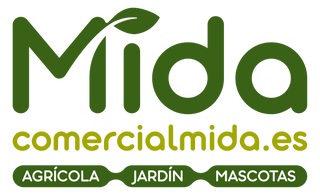Dogs and processionary caterpillars are not a good match. This insect with its characteristic appearance and particular behavior is very dangerous for them, so much so that it can even cause death if you do not act diligently.
In this post we will talk about processionaries and we will tell you why dogs have to stay away from them and how to avoid contact with them.
Inherent in the arrival of spring are allergies and also the occasional plague. It is the case of theprocessionary caterpillar, a classic of our forests and parks, which arise with the arrival of good weather. We have all, on some occasion, seen them moving in single file (hence their common name of processionaries) on the ground that do not go unnoticed.
Also known as the pine processionary, it lives in the pine and cedar forests of the entire Peninsula and the Balearic Islands, however, they are not usually common in rainy areas or above 1500m altitude.
The puppies , due to their curiosity, their desire to play with everything and their tendency to eat anything they find, tend to be more at risk of coming into contact with the processionary caterpillar with respect to the adult dogs .
If our puppy is in the park exploring without supervision and approaches the row of caterpillars, sniffs them, licks them or eats them, we could have a serious problem.
¿Why the processionary is dangerous for dogs?
this wormIt has stinging hairs that cause necrosis. on the tongue and inflammations in the throat of the furry ones. Just by touching or smelling it they can already suffer significant allergic reactions. If our dog eats the caterpillar, it is also common for it to vomit and for pieces of it to appear in its vomit.
Depending on the importance and severity of the injuries caused in the affected areas, they can cause necrosis in the tissues, thus having to amputate parts of the tongue for having caused irreversible injuries.
It can also cause other significant damage to the eyes, specifically the cornea and conjunctiva.
¿How do we know if the dog has been in contact with a processionary??
He will try to scratch his mouth because it will hurt. The visible symptoms are swelling of the lips, mouth and even the head.
¿What do we have to do if the dog touched a processionary?
We can wash his mouth with warm water but the most important thing is to go quickly to the vet so they can give your dog a fast-acting corticosteroid treatment to lessen injuries.
The result if you do not act quickly can be from necrosis of part of the tongue to death.
If the infection reaches the larynx, it can die from suffocation.
Council of ComercialMida.es
Avoid walking with dogs in the months of March to April in areas of pines and cedars during the risk period.
Do not let your dog near caterpillars or nests.
If your dog sniffs or, worse, licks one of these caterpillars, you should take him to the vet immediately.

